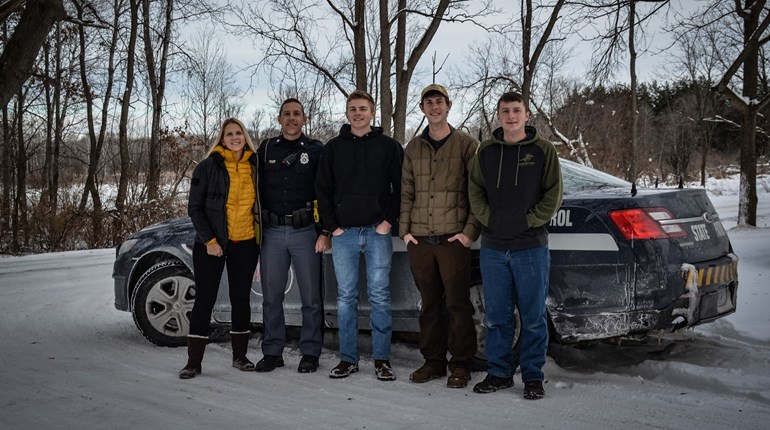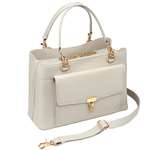
Calling all new firearm owners! If you have already read about practicing your draw through dry-fire practice, you might be looking for more skills to practice at home. Another easy skill to work on by dry firing is the magazine change. Whether you want to learn this for concealed carry or competition, there are many common principles that apply to both.
Note that you can only dry fire with empty mags. This means that seating your mag will be easier, requiring less force or pressure to push it in past the magazine release. So to be sure of your skills, follow up on the range with some actual magazine changes with full mags. If you ingrain a mag change based on empty mags and the ease of seating them, you may wind up being surprised in a match by a mag that’s not properly seated falling out. This is a recipe for frustration and mags on the ground. However, dry firing is a great way to ingrain the process in your brain, making it easier to develop at the range.

Safety First
Make sure that you have no ammunition in your dry-fire area. Check that the gun and magazines are empty. Then check them again. Follow the rules of firearms safety, even when your guns are unloaded and you’re practicing dry-fire drills.
Set up a space that will keep your magazines and your toes safe. If you live in the country and dry-fire in your backyard or on the range, awesome! If you live in a more populated place and need to dry-fire indoors, set up something to catch your mags. Even an empty mag landing on your toes can hurt! I tend to practice over the foot of my bed or arm of the couch so that my mags can drop without risk of damaging them or my feet. A carpet or rolled up towel will also work, but tile or concrete can damage your mags. Sure, you drop them in a match on hard surfaces, but not hundreds or thousands of times. If you are practicing mag changes with movement, you will also want shoes on to protect your feet!
Steps in a Magazine Change:
1. Dominant hand hits magazine release with magwell vertical
2. Support hand goes to the belt and new mag
3. Gun stays high, within your line of sight, eliminating excessive movement.
4. As the mag drops free, rotate the magwell and look at it as you insert the new mag.
5. Seat the new mag firmly.
6. Rebuild your grip as you press the gun out and regain your sight picture.




Be Methodical
Don’t just practice random mag changes. Practice them as you would “in real life.” That might mean in a concealed-carry or competition scenario. Whatever way you plan to practice, do so with purpose.
Find something to act as your target, even though practicing a mag change doesn’t require you to fire. Start with your finger on the trigger as if you’ve just shot. Or build multiple skills into the drill and practice a draw, dry-fire, mag change and then re-acquire the target.
You can set up a timer with a par time. Start with a time that is reasonable, and work within that par time. If this is for concealed carry, consider that the goal isn’t to get it done as fast as possible, but as fast as you can while having a 100 percent reliable magazine change.
Concealed Carry Mag Changes
If your main purpose in having a gun is for self-protection and concealed carry, you will need to be realistic about where your mag changes would happen. For example, if you carry because you work at a bank, then you might want to practice behind a counter. Try to learn how to complete a mag chance in whatever place or position you anticipate it could happen.
If that’s changing a magazine in your car, you’ll want to practice a mag change in your vehicle—understand what your seat belt or being in a tight space means for your ability to reload. Learn what it would take to get your spare mag from under a concealment garment on your body or a holster inside your purse. Going through the motions and thinking through the actions will help you to gauge if your concealed carry set-up is right for you!
Competition Mag Change
Magazine changes have to be done in a very specific manner during competition. If a stage description prescribed the mag change, then the competitor is likely standing still. If the competitor needs more rounds as they complete a course of fire, then the goal is to never do a “flat-footed” reload. The most efficient way to change a magazine is to use the time it takes to move positions to complete the change, and be ready to shoot at the next position.
A mag change with movement still starts the same way, with two hands completing the same movements. Ideally, a mag change is done within the first few steps of moving to a new position. The mag should fall and you should reload as soon as you come off a target and leave your position. This allows you to focus on aggressive movement and finding your mark for your next position. If you can complete the task quickly, it will help you to get your feet and eyes moving to the next position and target as fast as possible.
No matter if you use a firearm for competition or self-defense, time spent working with your gun in different scenarios until you can manipulate it automatically is going to free up your mental bandwidth to focus on the act of shooting. Whether it be focusing on a new position in a match or analyzing a dangerous situation, manipulating your firearm should be muscle memory so that your brain is free to process your surroundings.















































